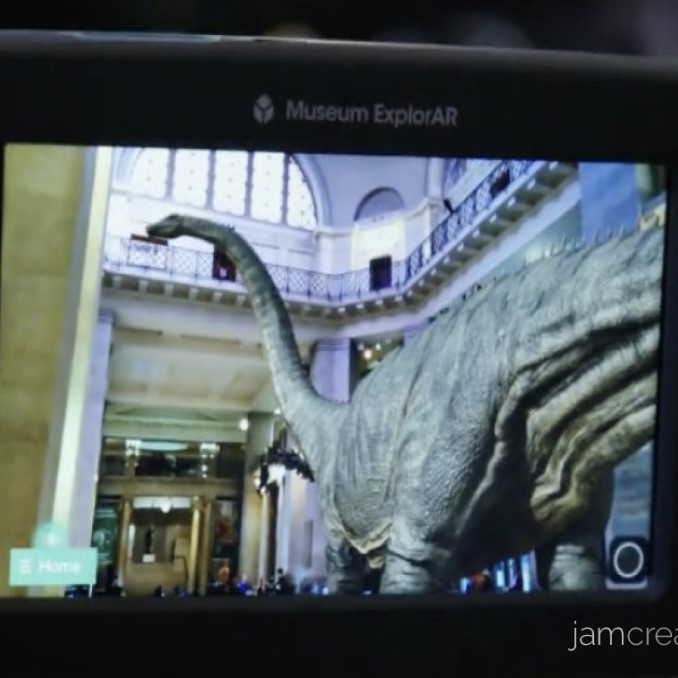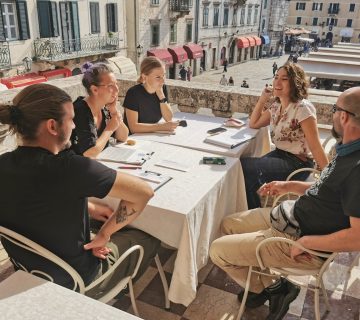The IE Freelancers Team represents freelancers across our network, shares helpful resources and sparks discussions on the issues that concern us.
This summer we aim to launch some guidelines for freelancing in heritage interpretation. We hope there will be something to appeal to everyone: whether you’re thinking about freelancing but are not sure what it entails, you have been freelancing for some time but don’t know how to register as a business, or you’ve been freelancing for decades and are looking for new resources and perspectives on contract work during the time of Covid-19. It will be more than just a set of guidelines; ideally, it will help connect us as a network of freelancers and offer support to those who need it or just want to share experiences. We will aim to revise the guide annually to provide updated and relevant information for freelancers in changing circumstances.
From this issue onwards we will contribute to IE newsletters with a short article on an issue facing freelancers. We start below with one from Edo Mešić, a freelance archeologist and heritologist, about eHeritage. For the autumn newsletter, we plan to contribute about what it means to be a freelance tour guide, especially during the Covid-19 pandemic.
We will also invite you to join us at a Thematic table in the autumn. We need your comments, suggestions and additions to be featured – What is important to you that we should discuss?
If you would like to provide an article for a future guide or newsletter (or a response to any article published), please feel free to reach out to us. If you’re passionate about the topic, you might want to join us in the Freelancers Team.
Igor Ianachi is IE’s Freelancers Coordinator and can be contacted at: igor.ianachi@interpret-europe.net.
A short introduction to eHeritage
In these extraordinary times, the Covid-19 pandemic and the resultant lockdowns have shown us the huge potential that digital technology can have as an alternative or addition to promoting and interpreting cultural and natural heritage. This is particularly evident in work with youngsters who, in some parts of the world, have been forced to sit at home for online classes. The idea of using modern technology for heritage interpretation dates from the time when 3D was introduced to related fields. But an attempt to develop general guidance was established by the London Charter only in 2006. According to the Charter, computer-based visualisation of cultural heritage was created as a “means of ensuring the methodological rigour of computer-based visualisation as a means of researching and communicating cultural heritage”. (See more here: http://www.londoncharter.org/introduction.html.)
The charter document outlines six main principles for the use of computer-based visualisation methods in relation to “intellectual integrity, reliability, documentation, sustainability, and access”, and is concerned with “research and dissemination of cultural heritage across academic, educational, curatorial, and commercial domains”.
The main aims of eHeritage
The main idea behind the concept of eHeritage is the recreation of cultural sites or artefacts for educational reasons, or to complememt or augment interpretation – not just of popular sites, but of those that are remote as well. These experiences are meant to be used as interpretive tools with the aim of educating people. As technologies advance, we have begun to see innovative ways to experience sites. Beside the traditional approach, which is primarily used in archeology, today it is possible to post videos on social sites, which are popular with the younger generations.
Advantages and disadvantages
Like every concept and idea, eHeritage has advantages and disadvantages. At the moment, there are two main issues concerning the full implementation of digital heritage. Often, heritage professionals are not sure about the costs which this approach could entail. Because of that, it is not a big surprise that using digital technologies can frighten any potential institution due to the real potential of higher costs. Some of the equipment which is used for 3D data acquisition can be very expensive and training of extra staff takes time. This is sometimes treated as a luxury that institutions cannot afford. The cost of 3D-scanning is comparable with the cost of a professional photographic campaign and considered out of reach for most heritage institutions.
Stunning advances in computer graphics over the last decade have allowed us to put very powerful visualisation tools in the hands of even the most inexperienced novice. This has led to the creation of some stunning and innovative computer-generated artwork and installations. The advanced graphics capability has also aided the production of photo-realistic, computer-based reconstructions and visualisations of cultural heritage monuments and events – which, of course can be controversial in some cases. On the other hand, the digitisation of cultural heritage can enable permanent access to works of art, ranging from literature and paintings to archeological and natural sites.
VR technology can also be used in cultural and architectural heritage fields because of its massive potential. It provides the user with the opportunity to visualise a place or artefact three-dimensionally, using immersive, 3D digital technologies. This technology has opened up a tremendous possibility in our ability to share elements of heritage with a broader audience – both intellectually and geographically. VR allows people from all over the world the opportunity to experience a site they otherwise would not be able to visit in person for reasons of geography, finance, or various levels of physical disability. Creating a means of virtual visitation also contributes to a site’s continued preservation, maintenance, and sustainability. Archaeological sites in particular are susceptible to degradation through environmental and human factors. The more visitors travel through the site, the higher the risk of damage and wear. Digital technology can reduce this threat, and provide an additional or alternative way to experience a site, even if it removes the visitor from the first-hand experience at the site itself.
Future
Digital heritage is likely to become even more important and widespread over time. We are living at a time when this concept in heritage interpretation is just starting to emerge. Increasingly, individuals, organisations, and communities are using digital technologies to document and express what they value and what they want to pass on to future generations. At the moment, the biggest issue is development of tools to support text in multiple languages and texts on the internet. This will lead to further rapid growth in digital heritage in the parts of the world that are currently disadvantaged by the predominant use of English on the internet.
Edo Mešić, a freelance archeologist and heritologist, is IE’s Country Coordinator Bosnia & Herzegovina and is a member of IE’s Freelancers Team. He has worked as an external associate at the Zemaljski Muzej Bosne I Hercegovine (the National Museum of Bosnia & Herzegovina), the oldest and most prestigious museum institution in Bosnia. During his time there he worked on the presentation and interpretation of cultural heritage (archaeology) by adopting modern technology. Edo has participated in numerous archaeological excavations on sites in Bosnia & Herzegovina and in Slovenia. His interests include digital archaeology, landscape archaeology, Roman provincial archaeology, digital heritage (eHeritage), museology and museum education, as well as heritology and heritage interpretation. Edo can be contacted at: edo.mesic@interpret-europe.net.
To cite this article: Ianachi, Igor and Mešić, Edo (2021) ‘Looking to the future – Global trends and hot topics from the Freelancers Team’ in Interpret Europe Newsletter 2-2021, 13-14.
Available online: https://interpret-europe.net/wp-content/uploads/2021/06/Newsletter-Summer-2021.pdf




